Bosch dishwasher does not fill with water
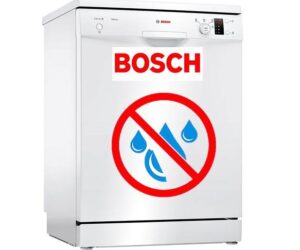 Despite the high quality of modern household appliances, any device can fail over time. If the Bosch dishwasher does not draw water, then most likely the reason is hidden in error E3, which the “home assistant” will display shortly after this problem occurs. This is a very common problem that housewives often encounter, so it has been well studied. Let's figure out why this happens, as well as how you can eliminate this problem with your own hands.
Despite the high quality of modern household appliances, any device can fail over time. If the Bosch dishwasher does not draw water, then most likely the reason is hidden in error E3, which the “home assistant” will display shortly after this problem occurs. This is a very common problem that housewives often encounter, so it has been well studied. Let's figure out why this happens, as well as how you can eliminate this problem with your own hands.
Let's make a list of possible problems
If your Bosch dishwasher is humming and does not fill with water, this may be due to several reasons. The check should always begin with the most basic and common causes, gradually moving on to more complex and rare ones.
- Make sure the water supply to your home has not been turned off.
- Check the water supply valve to see if it is blocked.
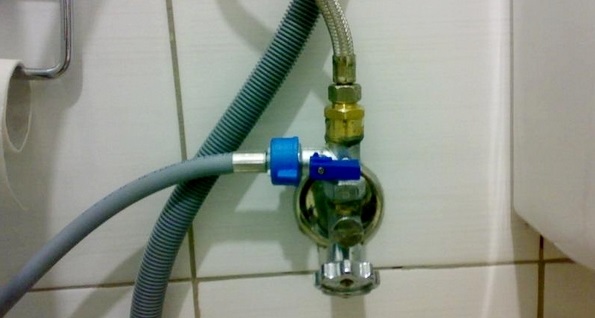
- Check that the washing chamber door is securely closed. It must be sealed with an electronic lock, otherwise the water supply will not start and the washing simply will not start.
- If the problem is really in the door, which cannot be closed, then this may be due to damage to the lock, or due to foreign objects getting inside.
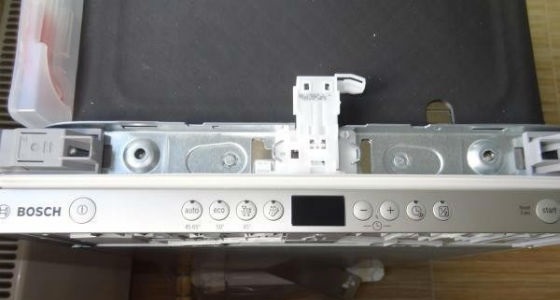
- Inspect the inlet hose to make sure it is intact, not pinched anywhere, and is not clogged.
If none of the five reasons described are identified, then a more complex check will have to be carried out. To do this, you need to study the PMM nodes.
- The problem may be in the inlet valve, which, based on a signal from the control module, opens and closes the membrane.If the valve is faulty, the membrane will remain closed and water will not flow into the dishwasher.
- Damage to the pressure switch will also prevent the “home assistant” from functioning normally. This water level sensor measures the amount of water in the tank and transmits the data to the control board. Accordingly, if there is no data, then there will be no signal to supply water to the tank.
- The electronic module itself, the “brain” of the dishwasher, which is responsible for transmitting commands to all elements of the device, could fail.
- Also, the malfunction could have occurred due to the fact that the Aquastop protective system was activated.
There are many possible causes of the malfunction; let’s proceed to a thorough analysis of each of them.
Impurities in the water have clogged the tract
One of the most popular reasons for the lack of water supply is due to a clogged machine filter. This happens due to the fact that tap water is filled with various impurities and contaminants, which clog the flow hose. Once a blockage occurs, the Bosch dishwasher either cannot work at all or works with difficulty, since the water supply becomes minimal. What to do in such a situation?
- Turn off the water supply and unscrew the flow hose.

- Clean the mesh filter installed at the junction of the PMM and the hose.
Most often, the filter looks like a small mesh made of plastic or brittle metal.
- If the contamination is not severe, you can clean the element using a needle or toothpick, or by placing the part under a powerful stream of hot water from the tap.
If you can’t clean the element with your own hands, then soak it in a citric acid solution for several hours, which will definitely help with even the most serious stains.
Does the dishwasher close properly?
When the appliance hums loudly and does not fill with water, this may be due to the door not being fully closed. In this situation, you need to carefully check that the door is not closed due to inattention, or something is blocking it.
- Assess the integrity of the rubber seal - is it torn off, is there any cracks on it, is it preventing the door from fitting tightly.
- Make sure the door latch is not damaged. For the working cycle to begin, the door must be closed strictly until it clicks.
- Make sure that no foreign objects get into the gap between the camera and the door.
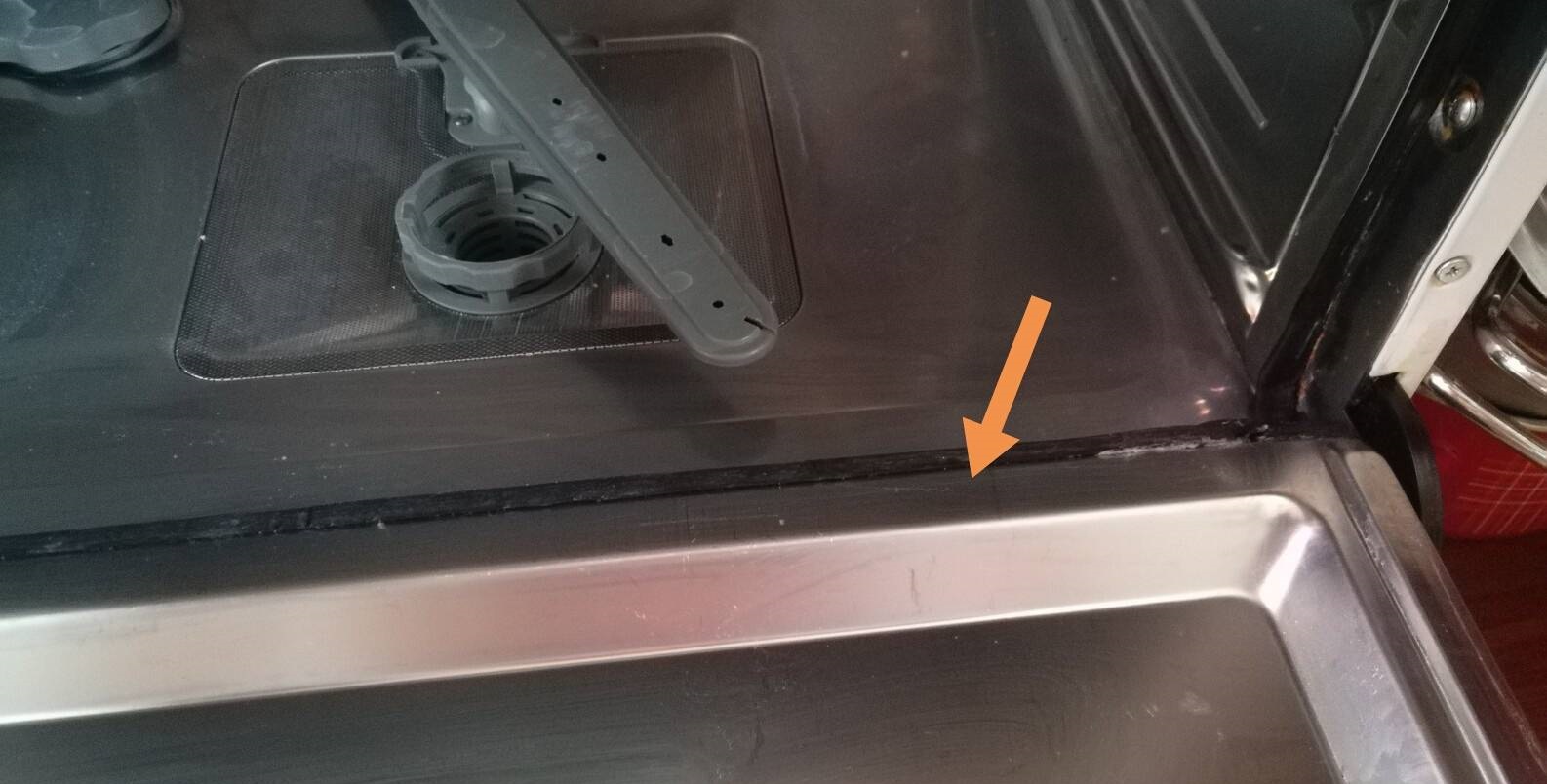
- Using a building level, evaluate the correct installation of the “home assistant” - it must stand as level as possible.
- Examine the lock mechanism to see if it is faulty.
If the problem is in the lock, then there is no point in repairing it, you will have to change it. Follow our instructions to deal with it yourself without calling a service center technician.
- Open the PMM door.
- Unscrew the bolts that are installed on the inside of the washing chamber to remove the outer door panel.
- Disconnect all wiring.
Be sure to take a photo of the correct wire connections so you have an example on hand for reassembly.
- Remove the lock after first removing the fasteners.
- Install a similar new part in its place.
Completion of the repair follows the same instructions, but in reverse order.
The valve does not open
If previous checks did not yield anything, then there is a high chance that the water intake valve is to blame, which often causes a lack of fluid intake. The element should be carefully inspected for damage, and if everything is in order, then its electronic components should be checked.To do this, just take an ordinary multimeter set to voltage measurement mode - if the membrane does not open, then the unit is damaged.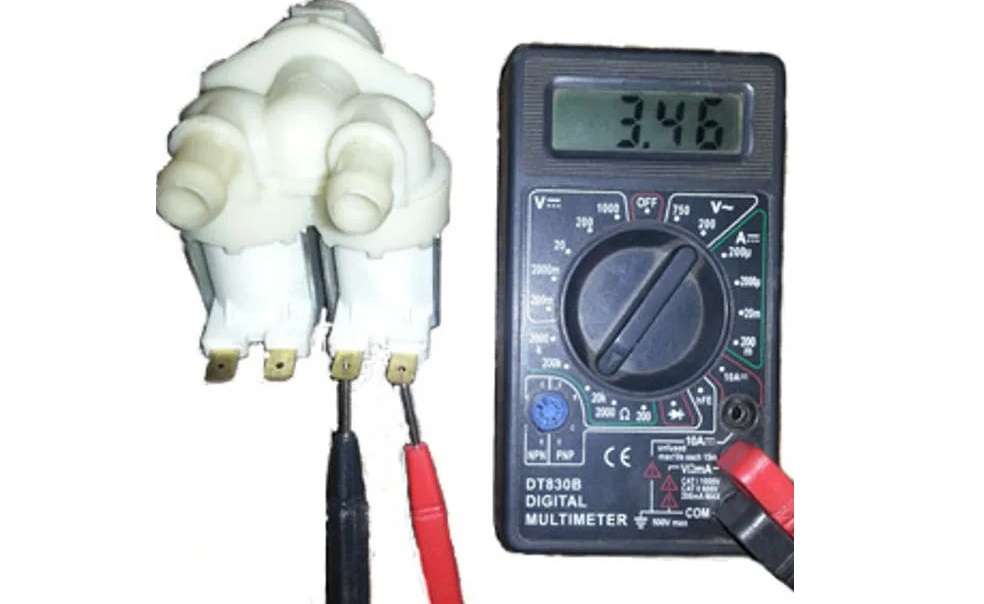
Next, you can take on the resistance test, which can be performed with the same tester. If it is missing, then it will not be possible to restore the element’s functionality - it can only be replaced with a new one. How to do this at home?
- Disconnect the wires from the valve.
- Unscrew the fasteners that secure the part.
- Install a new element into the seat.
- Connect all the wires using the photos you took earlier.
Try to purchase only original spare parts for your “home assistant” so that replacement does not affect the performance of the machine.
The inlet hose is pinched
Another well-known problem is a pinched filler hose. This can happen accidentally, for example, during the rearrangement of equipment, due to which one of the legs of the PMM could crush the hose. The problem can be detected immediately if the inlet hose bursts due to this and floods the floors with water. If the sleeve can withstand such tension, then this will directly affect the water intake, which the housewife will notice only during the working cycle.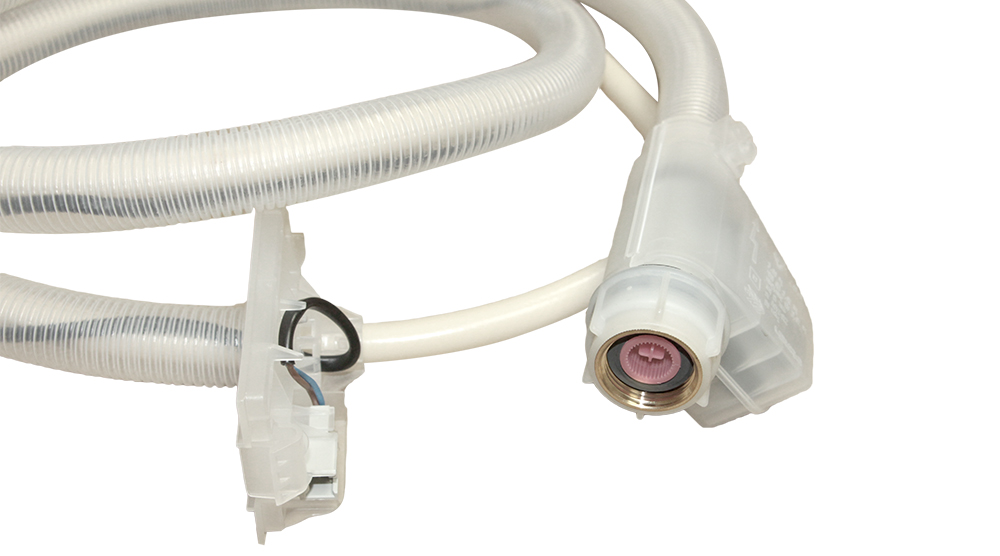
Sometimes a similar problem can arise after the hose is crushed by other household appliances or kitchen furniture. This is why you need to pay such close attention to the inlet hose and the correct installation of household appliances.
The leakage protection sensor has proven itself
This item should only be checked in a situation where your Bosch dishwasher has an Aquastop protection mechanism. It may have tripped after it detected a leak, causing the float to rise and trigger the switch, which in turn blocked the fluid from being drawn in.If your equipment suffers from a similar problem, it will inform the user about this with fault code E15. You can fix this like this:
- when the protective system is mechanical, you need to turn off the dishwasher, turn off the water supply and remove the hose;

- then you should inspect the inlet valve to make sure that it is not pressed against the walls of the hose;
- if this is the case, then the hose needs to be replaced.
In a situation where the “home assistant” is equipped with an electronic leakage protection system, you need to connect a wire to the sensor and repeat the described steps to restore the mechanical Aquastop.
The pressure switch is not working correctly
When the water level sensor is broken, liquid will also not flow into the dishwasher tank. The same will happen if the pressure switch is not functioning properly. You should not try to repair the unit yourself - like many other elements, it can only be replaced.
Most often, the sensor is located in a plastic box attached to the circulation pump housing. To check, blow strongly into the pressure tube and listen - if you hear characteristic clicks, then the element is in order. If there are no sounds, then the part needs to be replaced.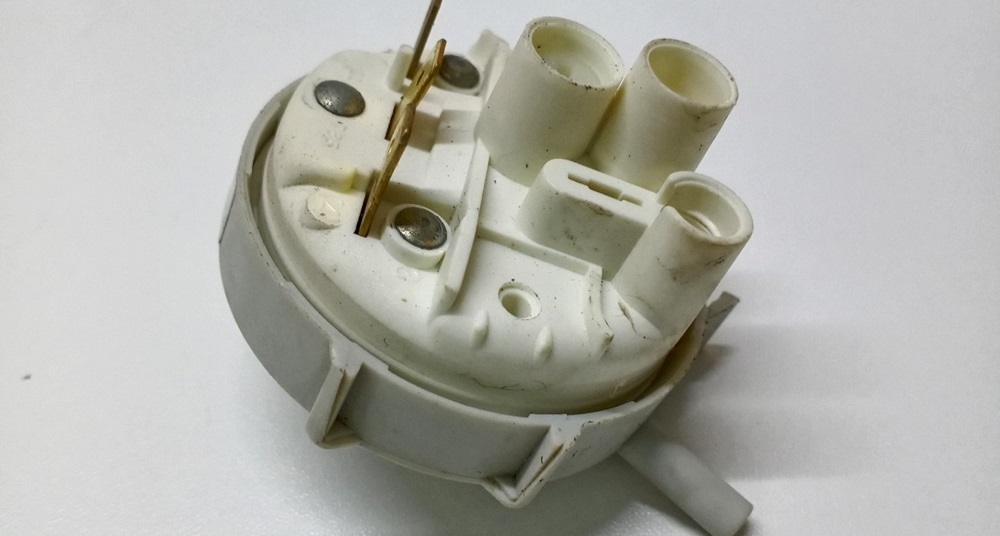
A more reliable check can only be carried out by a service center specialist who knows how to correctly check the pressure switch settings. This is especially true in a situation where repair technicians have previously worked on the water level sensor, which could disrupt the operation of the unit.
Is the tee valve intact?
Most often, a tee tap is installed in front of Bosch household appliances, which helps shut off the liquid supply without affecting the water supply to the sink where the machine is connected.This is a very laconic solution, because you can conveniently open and close the liquid supply to the machine without touching other taps. The problem is that the tee often fails.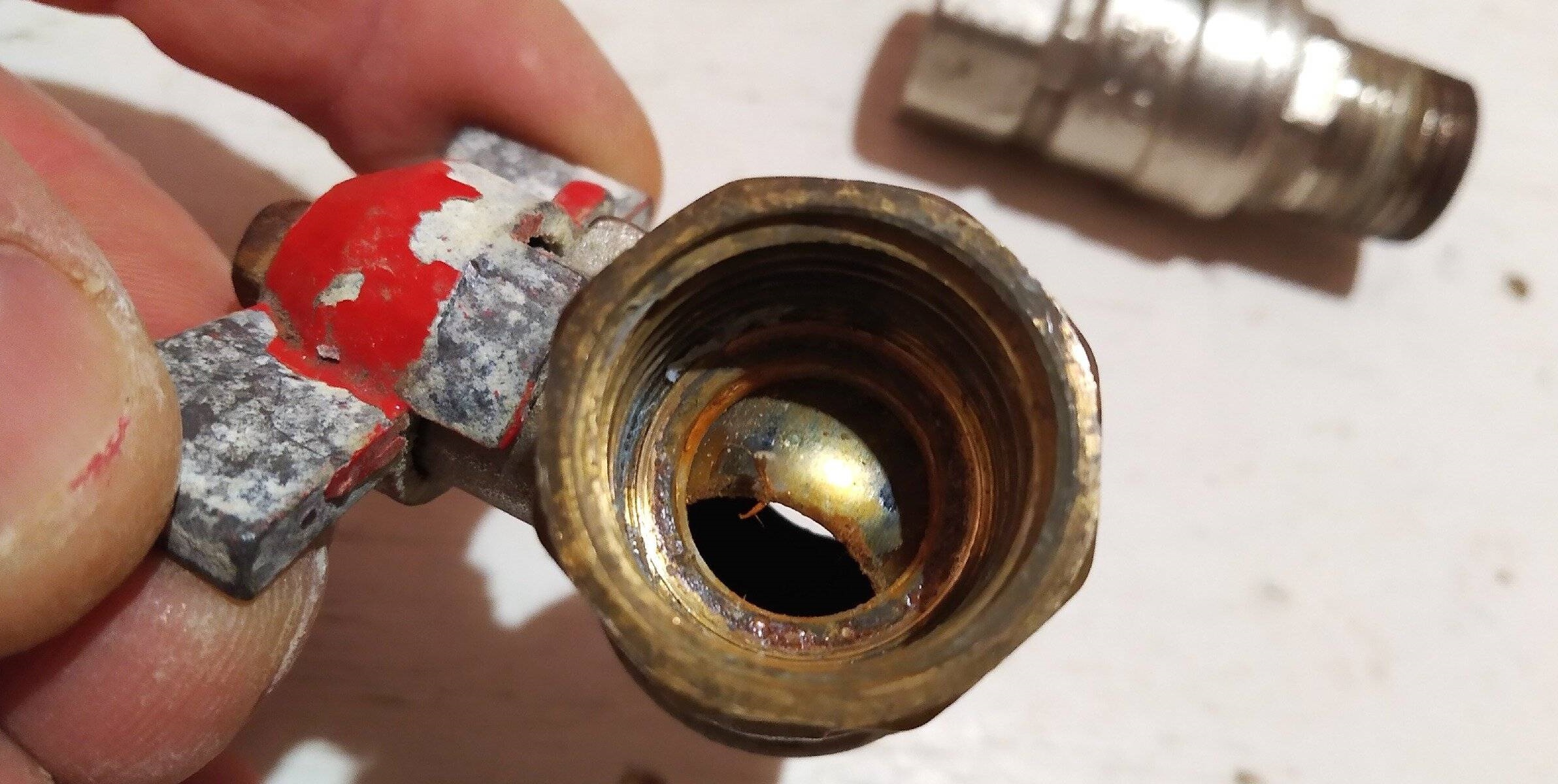
The part can be damaged simply by turning the faucet handle incorrectly when turning off the water supply. In this case, it will be difficult to find out about the damage, because the handle will continue to turn, but the tap itself will remain closed. In this situation, it will seem that the problem is hidden anywhere, but not in the tee, the handle of which continues to rotate properly. This happens very often, so you shouldn’t rule out this option.
Service PMM on time
It is impossible to protect against damage to your favorite “home assistant”, especially in conditions of active use of the device. However, you can always reduce the chance of damage if you follow simple recommendations.
- Follow the standard operating procedures described in the official user manual.
- Install the equipment correctly.
- Clean all its filters in a timely manner.

- Check the hoses regularly to avoid kinks.
- Install a voltage stabilizer so as not to be afraid of sudden power surges that can damage any equipment.
Take care of your Bosch dishwasher and it will last you a long time. And if a breakdown occurs, then do not despair, it is quite possible that everything is not so bad.
Interesting:
Reader comments
- Share your opinion - leave a comment


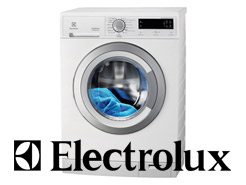


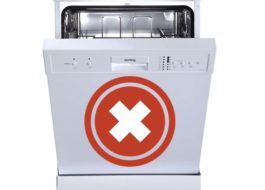















Add a comment